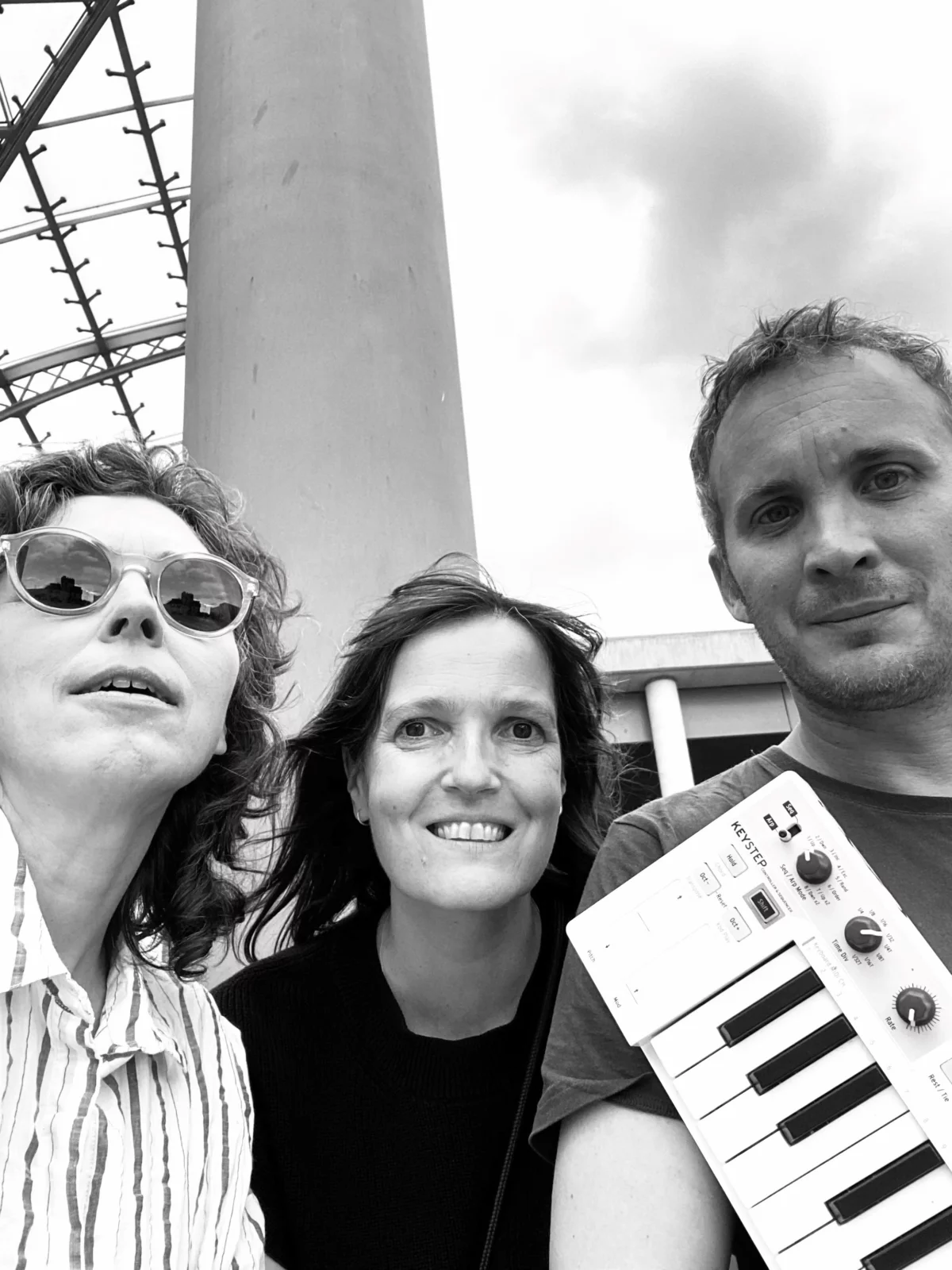Screaming, Breathing, Wailing, Singing
By Georg Kasch
The group SEE! explores sounds and body resonances in their residency “ON Connection”
It's dark. There the soft boom of a bass. You sense that there are other people, in front of you, behind you, next to you. But it’s only now and then that there’s enough light for you to recognize the outlines of the other guests and performers, shadows. The main orientation is provided by the sounds and words – a PeterLicht text – plus a huge inflatable object that you can feel your way along and that fills and empties like a lung in slow motion.
The audience unites as a "resonating swarm"
Sounds, rhythms, people, connected in a highly sensual performance that focuses more on hearing and feeling – what the group SEE! first tested in 2015 in "Ich bin ein Volumenjoker" runs through all of their works. Since 2013, the artists SE Struck and Alexandra Knieps have been working in various collaborations on productions that lie somewhere between dance, concert, and immersion, i.e., the participation of the viewer and listener in a world all their own. SEE! performances get unusually close, creeping directly under your skin, especially because of the strong auditory component.
"Resonating swarm" is what Alexandra Knieps calls this concept, which turns the audience into allies via sounds and movements. "The sounds connect the bodies sometimes consciously, sometimes unconsciously." SEE! has also been working on this in its #TakeHeart residency "ON Connection," awarded by the Fonds Darstellende Künste and funded through NEUSTART KULTUR. The residency funding, in collaboration with the Alliance of International Production Houses (BiP), enabled the group to spend a week researching new sound-body effects with musician Philip Zoubek at the Tanzhaus NRW.
 © SEE!
© SEE!
When bodies lack social resonance spaces
In doing so, their residency built on the previous one, which was also funded by the Fonds Darstellende Künste via the #TakeCare program. In "Staying with the trouble," together with dancers Anca Huma and Frank Willens at PACT Zollverein Essen, they examined the body and its "deconstructed corporeality" during the pandemic: "What happens to the body when social spaces of experience shrink?" asks Knieps.
"ON Connection" continued to explore the consequences of the pandemic for the human body and its resonant spaces. On the one hand, according to Alexandra Knieps, sound spaces were enormously restricted during the lockdown, "there was no public shouting, breathing, crying, wailing, and singing. At the same time, these moments were still stored in the body, for example, from shared concert experiences and their euphoric sounds."
"We asked ourselves: How can we use this for the present?" continues Knieps. "That's why we set our sights on the sound worlds of major events, popular sounds, melodies that resonate emotionally." SEE! had already collaborated with musician Philip Zoubek, a specialist in prepared pianos, in their 12-hour durational performance "The Hype" in 2016.
When a Whitney Houston song becomes rustling leaves
During their week together at Tanzhaus NRW, however, the grand piano remained closed. Instead, they collected ambient sounds together – noises and sounds that occur during communal events such as clapping, laughing, singing, cheering. They created a sound archive, supplemented by a music list that included popular classical music – Mozart, Baroque – as well as pop songs.
Zoubek distorted these sounds and songs with a granular synthesizer, which broke them down into their individual parts, the grains – very short, digital sound fragments whose length is usually less than 50 milliseconds. From this "pixelization of sounds," as Knieps calls it, they together assembled new, universal sound worlds. "Memory meets the present," Knieps says, explaining the concept. "What used to be a Whitney Houston song now sounds like rustling leaves." The relationship with nature, after all, was also something that often changed during the pandemic. SEE! punctuated this new sonic texture with speeches and utterances.
On a second level, SEE! worked with the body-mind centering (BMC) method developed by Bonni Bainbridge Cohen in the 1970s to retrieve the experiences of social events stored in the body and make them visible through dance. "BMC assumes that the body and nature share the same molecular system," Knieps says. "That organisms therefore function in a very similar way, connecting the outside and the inside." Just as the concept of the resonating swarm allows people and their surroundings to resonate together and connect.
Sound sketches that could unfold in the residence
The first result is now a 15-minute sound sketch that SEE! want to develop for an audience and a gallery situation. The goal is to create individual listening stages in which each listener is thrown back on themselves. "We ourselves are quite surprised and excited about what has now been created," says Alexandra Knieps. "We envisage a walk-in sound installation in which the sound takes on a physicality of its own."
The live performance is not a necessary consequence of the residency funding. The program explicitly allows for research without a concrete outcome – something that didn't exist in the funding instruments for the independent performing arts because only productions and revivals were funded. "Residencies like this are very important for the artistic process, so that you don't shimmy from project phase to project phase, but have space to explore topics in depth," Knieps says. The project "Still, still live," which SEE! is planning for the fall, directly incorporated the funded residency "Staying with the trouble" and its nature research. "That kind of funding has been sorely lacking." It would be unfortunate to see it scrapped now, when the pandemic is only just nearing its end.
From funding to the rehearsal room and onto the stage – cultural journalists Georg Kasch and Elena Philipp visit funded projects as part of #TakeHeart from the Fonds Darstellende Künste.